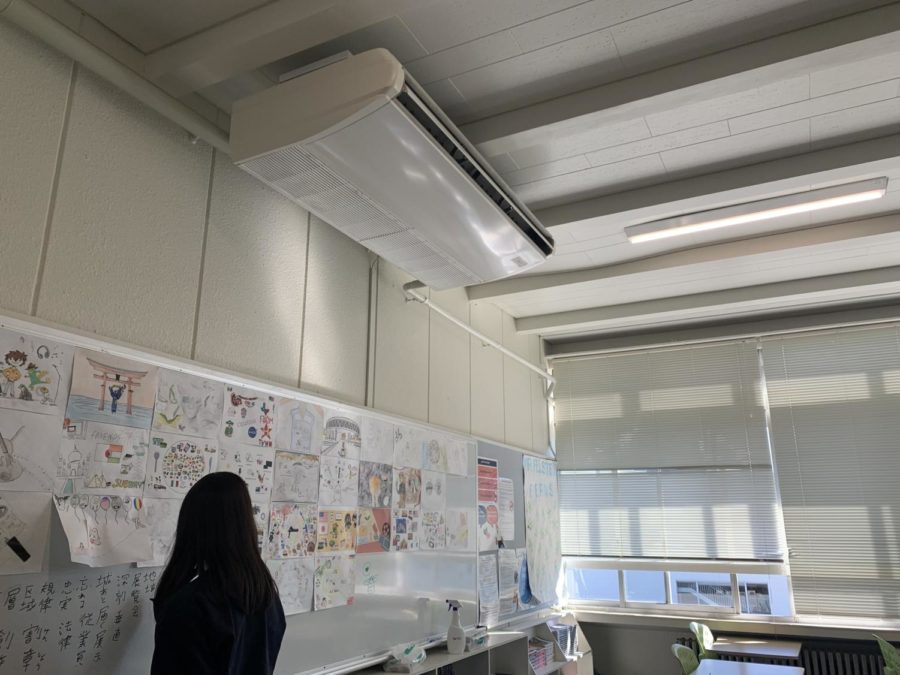Air conditioner and LED lights in classroom. (Image by Vanessa D.)
How has the pandemic impacted Sacred Heart’s electricity footprint?
Electricity shapes every aspect of our lives. One convenient flick of a switch and our rooms are lit, heated, and cooled. We tend to forget the impacts our casual use of electricity has on the environment as we are so wrapped up in our own daily lives.
Therefore, we, the Environmental Science class took it upon ourselves to investigate the effects of COVID-19 on Sacred Heart’s electricity footprint, and ask ourselves: What impact does this have on our environment?
Due to COVID-19, Sacred Heart went into periods of e-learning, or learning from home through a virtual classroom. We were happy to see that during these periods, Sacred Heart’s electricity consumption decreased significantly. The biggest decrease can be seen in April 2020, when energy consumption decreased by a massive 51%. We also saw a small dip in energy consumption during October of 2020 as we went into a short, two-week e-learning period.
We are now back from e-learning, so it has become a necessary precaution to keep classroom windows open for ventilation. Therefore, we predicted that this would increase electricity used to heat and cool classrooms, especially during Tokyo’s cold winter months. We were surprised to see, however, that there was no increase in electricity consumption. In fact, it was slightly lower. This could be accounted for by Sacred Heart’s new adaptive policy that allows students to wear winter coats in class and the energy-efficient air conditioners that were installed in the summer of 2020. Additionally, Sacred Heart recently installed energy-efficient LED lights into their classrooms, further decreasing our electricity consumption.
This seems like promising news for our environment. But what all of this data and analysis fails to show is the electricity that was being used to power each student’s room at home during e-Learning. There are roughly 560 students at Sacred Heart. This would mean that at least over 400 rooms needed to be lit, cooled, and heated during e-Learning for each student, a number that greatly surpasses the number of classrooms used at Sacred Heart. For example, like transportation, it is much more energy-efficient to have passengers traveling by public transport than all traveling individually by cars. The promising news, therefore, is not the exciting news we first anticipated it to be.
However, what this study and the experience of living through a pandemic has brought was the increased amount of awareness for our planet’s conditions. COVID-19 has allowed many of us to begin realizing how vital planet Earth is to our living. Disposable masks have brought our attention to our waste production, the introduction of COVID-19 into human society has created newly heightened awareness around wildlife trade, and clearing skies in India due to travel restrictions have given us hope that our earth can heal if we reduce our carbon footprint.
We still have a lot of work to do. Making permanent change will probably be one of the harshest, most arduous challenges humankind has to face. However, perhaps, this pandemic and the wisdom that is gained from this experience is a significant step forward into forming a better future for humanity.
